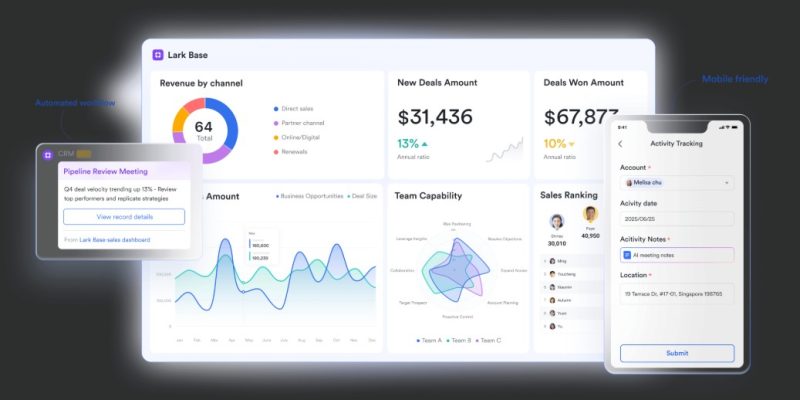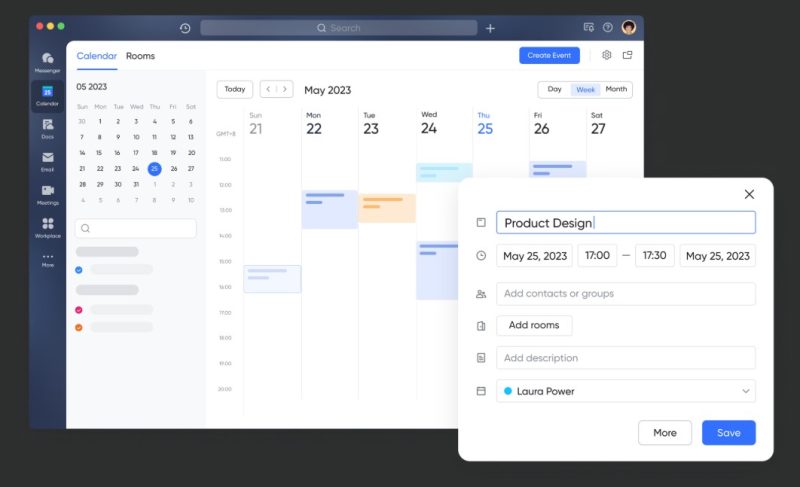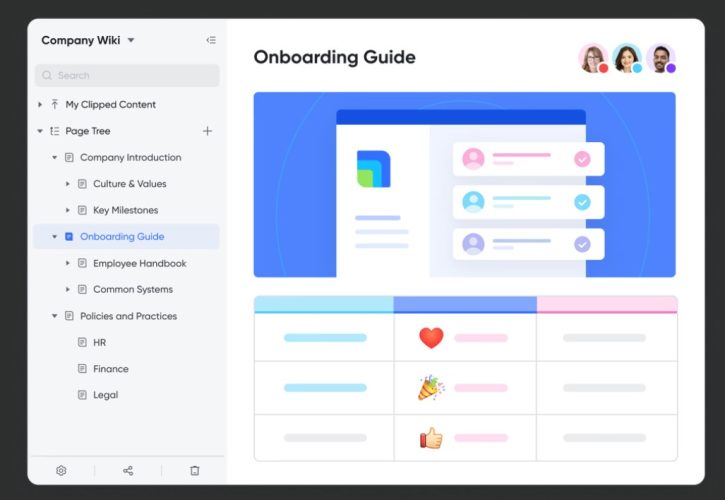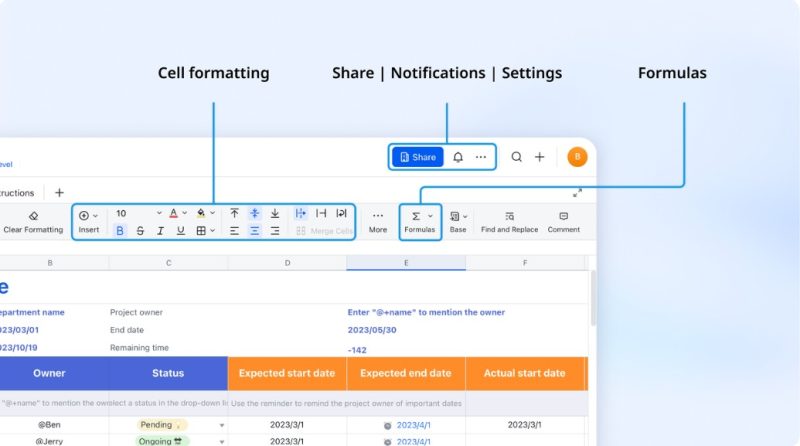The future of work is digital-first. Distributed teams, hybrid schedules, and global collaboration are forever changing how we work as organizations. For businesses to excel, organizations have to be willing to adopt tools that can accommodate speed, connection, and flexibility. Meanwhile, tools of the past, like email chains and static spreadsheets, are becoming increasingly inadequate. For that reason, many more organizations are adopting project management tools that bring communication, scheduling, and execution together, in one centralized system. When deployed correctly, digital-first collaboration is no longer a challenge when the right tools are embraced.
The digital workplace of tomorrow is not simply a replacement for office space; more importantly, it calls for a rethinking of what it means for teams to achieve outcomes. For a group of individuals to work together effectively means harnessing speed of communication, crystal-clear documentation, and sharp alignment of goals; all of these facets are as vital as the tools themselves. Organizations that adopt collaboration as a system, instead of a collection of apps, will be organizations that have the capabilities to scale successfully in the future.
Lark Base: Structuring the digital workplace

At the foundation of modern collaboration is strong information management. Lark Base gives teams a flexible way to organize projects, customer records, and approvals in one connected space. Rather than acting only as a productivity tool, Base can support the needs of a CRM app by linking customer data with projects and approvals—delivering the structure and clarity organizations need at every level. Instead of spreading updates across isolated systems, teams rely on Lark to centralize data, approvals, and project workflows.
Beyond organization, Base allows teams to customize data views for different stakeholders, automate reminders for deadlines, and link directly with tasks or docs for faster execution. For example, a marketing manager can track campaign requests, while a customer service team can log feedback in structured records. By adapting to multiple use cases, Base ensures information is not only captured but also actionable across departments.
Lark Calendar: Coordinating across time zones

Time management is a major pain point for teams working in distributed roles. Lark Calendar allows global teams to better manage their schedules by automatically converting time zones and providing shared calendars and shared availability for visibility. Additionally, with built-in reminders and smart scheduling to ensure employees never miss a deadline or double book themselves, Calendar provides stress-free visibility and coordination around deadlines in a flexible, digital-first employees’ environment. Whether working remotely or in a hybrid scenario, Calendar allows employees to maintain productivity, wherever they are located.
Calendar also extends its functionality to meetings, tasks, and reminders, so calendar is not just about blocking time in our calendar. For example, when teams schedule a meeting, they can attach the meeting agenda directly to the event, link to documents which will be reviewed, or even automatically record who was in attendance. Managers have visibility into resource availability, while employees no longer have to waste time with back and forth context of scheduling, resulting in better planning and less interruption in the flow of work.
Lark Wiki: Capturing collective knowledge

In fast-paced environments, knowledge can get lost in the conversation history of chat functions or email attachments. Lark Wiki puts this dilemma to an end by creating a knowledge base for organizations to have a central place to document standard operating procedures, onboarding documents, and strategic guidelines. For hybrid teams, it removes the reliance on synchronous communication between employees on-site and those working remotely to ensure that all employees can access and use the same information.
Additionally, Wiki supports version control, organized hierarchies, and internal search capabilities for employees to find and access information without getting lost in long chat strings or tricky attachments. Teams can tie Wiki pages to active projects and quickly reference workflows or policies in real-time. New employees can onboard more quickly by reviewing targeted learning pathways while existing employees can stay aligned by referring to updated knowledge. In practice, Wiki helps to grow the knowledge base with the business rather than fragment it over multiple systems.
Lark Sheets: Driving data-informed collaboration

Data informs the decision-making within contemporary organizations — as long as that data is accessible and co-creative. Lark Sheets offers more than just spreadsheets; it allows teams to collaborate in real-time, and integrate live updates and co-creative and chatter on progress with other Lark tools as well as seamlessly share. Teams can view KPIs, progress updates and there is an option as well to connect Sheets to project work being conducted elsewhere in Lark. This creates transparency around insights and eliminates problems of disconnected or outdated data.
Additionally, Sheets allows users to use formulas, pivot tables and dashboards in an easy format to turn this real-time data into insights immediately. Leaders can extract live updates on sales, customer voice or project milestone without waiting for reports. Because Sheets is part of the Lark context, this data is seamlessly part of the daily cadence versus as an individual phenomenon. This empowers employees to act on insights as soon as they happen. An agile workforce is a more efficient workforce.
Lark Approval: Simplifying decision flows

One of the most common slowdowns in digital work is waiting for approvals. Whether it’s expense reports, project sign-offs, or policy exceptions, delays in decision-making can stall entire teams. Lark Approval streamlines this by allowing requests and confirmations to happen directly within the platform. Managers receive notifications, review requests, and provide sign-offs without email backlogs.
For larger organizations, Approval supports an automated workflow that routes tasks to the right people instantly, tracks progress, and reduces manual follow-ups. Approvals can include conditional steps, escalation rules, or parallel reviews — features that mirror real-world complexity while keeping processes efficient. With a transparent record of every decision, teams save time, maintain accountability, and keep momentum across all levels of the organization.
Lark OKR: Aligning goals with outcomes

Digital-first collaboration is about more than efficiency – it is about impact. Lark OKR provides organizations a framework for aligning team work with company goals. Employees can now see how their actions contribute to larger objectives and track their progress in real-time to make adjustments for changing circumstances. This visibility drives performance and provides a sense of collective purpose across dispersed teams.
OKRs can now be connected to our day-to-day work through dashboards and progress reports, making business outcomes visible throughout the organization. Leaders now know whether projects are generating value, while employees can both celebrate their milestones, and too, recalibrate where needed. OKRs are more than goal-setting; they can also provide alignment and velocity for digital-first organizations, enabled by built-in transparency.
Conclusion
The move to digital-first work is not going to be a change that is temporary. It is a transformation in the way organizations get things done that will be lasting. What matters is how organizations connect people, data, and processes to let teams work fast and confidently. Organizations that continue to use disconnected tools will struggle with slow deployment, inefficiency, stalled progress, and misalignment. Organizations that can accept a unified platform to work with will find themselves working at a faster pace, at scale, and achieving better outcomes.
Lark is that unified platform. Lark has tools for structuring information, coordinating time, capturing knowledge, analyzing information, streamlining approval processes, and ensuring alignment around organizational goals. All of these tools support organizations to be successful in the ‘new’ world of work. By connecting work as a system of collaboration rather than disjointed tools, Lark keeps teams at the forefront of digital-first work. The organizations that embrace this kind of work will not only keep up but also will stay ahead of the timeframes that are defining the future of work.
